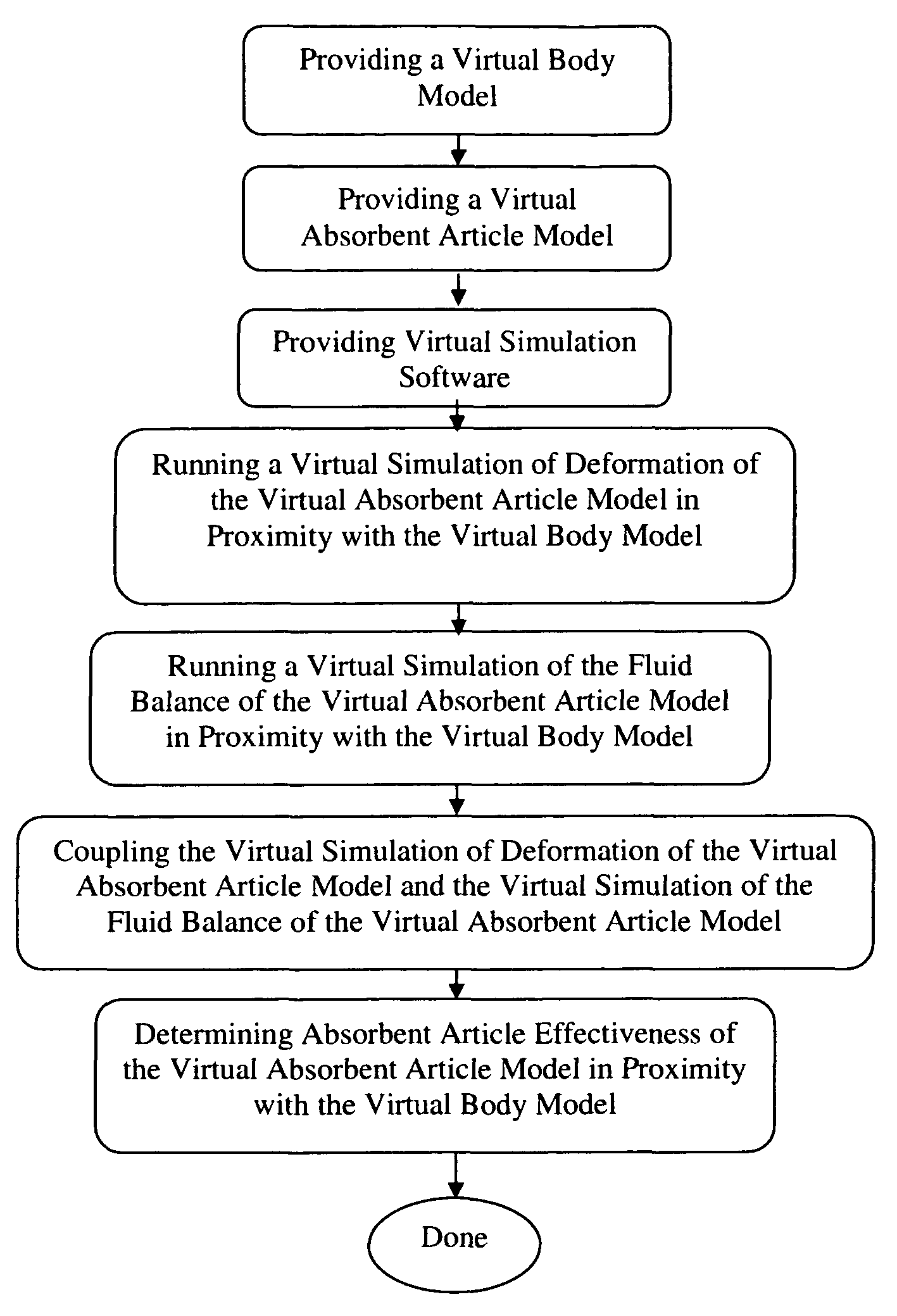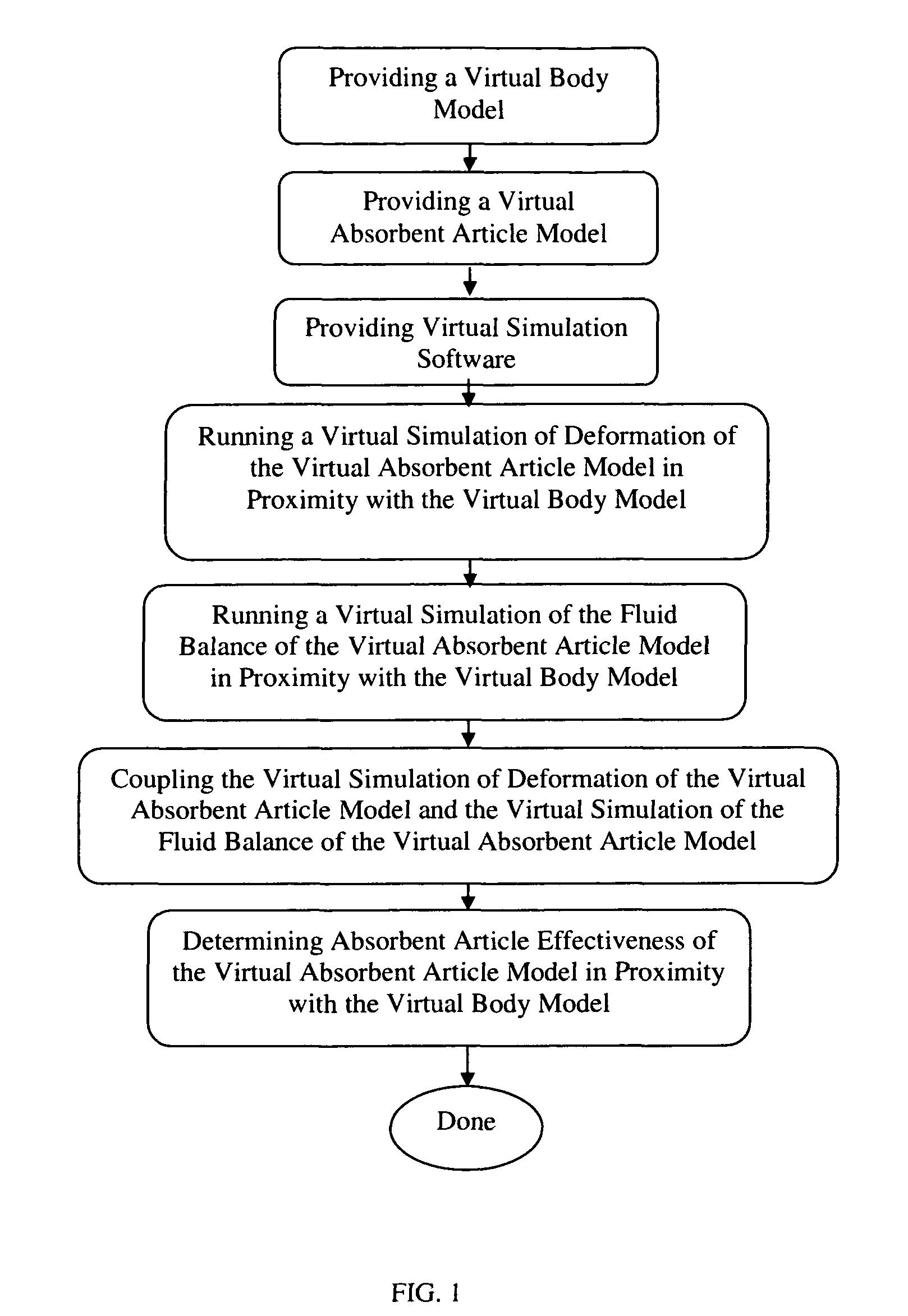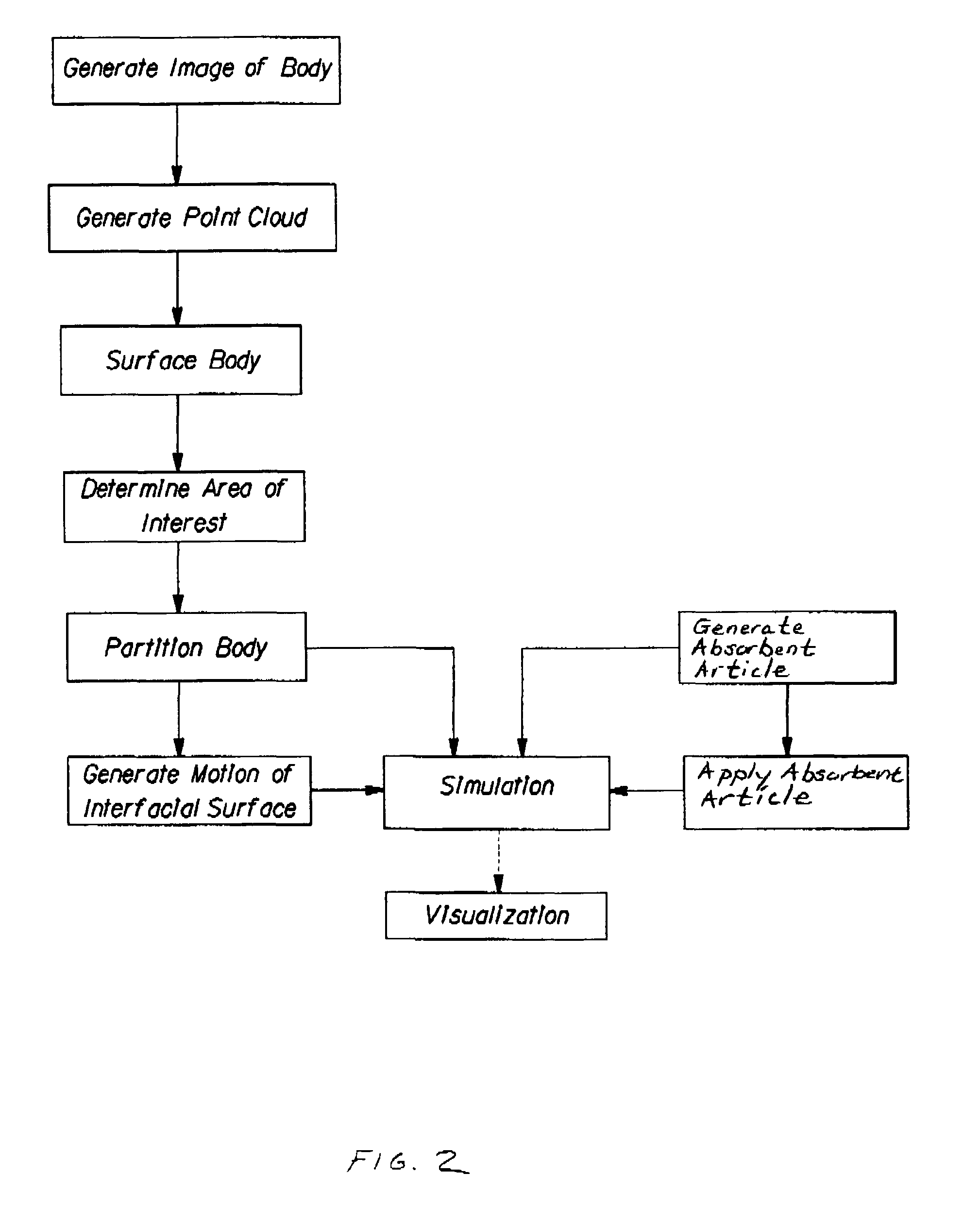Determining absorbent article effectiveness
a technology of absorbent articles and absorbent materials, applied in the field can solve the problems of social and physical discomfort of the person, non-compliance of the person subject to the testing, and discomfort of the woman, and achieve the effect of determining the effectiveness of absorbent articles
- Summary
- Abstract
- Description
- Claims
- Application Information
AI Technical Summary
Benefits of technology
Problems solved by technology
Method used
Image
Examples
Embodiment Construction
[0025]The method and system of the present invention can be used for designing absorbent articles intended for close body proximity. As used herein, the word body is used in a generic sense to refer to a sensible object in physical space. As used herein, the word “body” includes an animal body, the human body also being considered as an animal body. The word “body” also includes objects upon which absorbent articles are used for cleaning, acquiring fluid from, and treating surfaces. Bodies further include, but are not limited to, upholstery, carpet, flooring, countertops, windows, household fixtures, interior household surfaces, automobile parts, exterior household surfaces, and the like. Absorbent articles within the scope of the present invention include, but are not limited to, sanitary napkins, pantiliners, interlabial pads, incontinent pads, tampons, diapers, and breast pads. Other absorbent articles within the scope of the present invention also include, but are not limited to...
PUM
 Login to View More
Login to View More Abstract
Description
Claims
Application Information
 Login to View More
Login to View More - R&D
- Intellectual Property
- Life Sciences
- Materials
- Tech Scout
- Unparalleled Data Quality
- Higher Quality Content
- 60% Fewer Hallucinations
Browse by: Latest US Patents, China's latest patents, Technical Efficacy Thesaurus, Application Domain, Technology Topic, Popular Technical Reports.
© 2025 PatSnap. All rights reserved.Legal|Privacy policy|Modern Slavery Act Transparency Statement|Sitemap|About US| Contact US: help@patsnap.com



